Alaska/Canada 2022-17: Valdez
July 21-25, 2022
Spectacular. Gorgeous. Stunning. Breathtaking. Awe-inspiring. Valdez is pretty difficult to describe.
View from our campsite at Valdez RV Park.
Chugach Mountains south of Glenn Hwy.
As we neared Glennallen, upside down "L" poles lined the highway. One tour bus driver is known to tell his passengers that the poles spray water, giving passing vehicles a free wash.
Poles to guide snowplows.
The poles are actually for snowplows. The vertical section marks the edge of the road, so the drivers don't end up in a ditch. The horizontal section indicates the shoulder area. Poles on the Richardson Hwy also have GPS to guide snowplows.
We were treated to a moose sighting. It appeared to be a juvenile. At least, it wasn't a adult bull, as it had no rack.
Who, me?
Heading south to Valdez: Chugach Mountains.
Now we were ready to hit the road. For the next few hours, our heads would be on a gimble as we took in the landscape.
At Copper Center, 20 miles south of Glennallen, we stopped at Wrangell-St Elias National Park Visitors Center. At 13.2 million acres, Wrangell-St Elias is the largest national park in the US. In fact, 7 of the top 10 are in Alaska. In the lower 48, only Death Valley, Yellowstone, and the Everglades break the top 10. More on Wrangell-St Elias in our upcoming McCarthy-Kennicott post.
Ahtna Cultural Center Legacy House.
Also on the visitors center grounds is the Ahtna Cultural Center. The Ahtna are one of 13 Alaska Native Regional Corporations established by Congress under the Alaska Native Claims Settlement Act of 1971. Their mission is to preserve their cultural heritage and to provide opportunities for shareholders. For thousands of years, the Copper River Basin has been the traditional homeland of the Ahtna people. Most of the corporation's 2,000 shareholders are of Ahtna Athabascan descent.
Traditional fishwheel at Ahtna Cultural Center.
The center includes a fishwheel. Originally used by Alaska Natives for subsistence living--using only as much of natural resources as is necessary for food, shelter, clothing, transportation, handcrafts, and trade--today, any Alaska resident can use a fishwheel during the state-regulated salmon season.
It was chilly, and we were soon back in the van warming up.
Richardson Hwy connects Valdez, Mile 0, to Fairbanks, Mile 364.
We saw the Trans-Alaska Pipeline several times, as it nears the end of its journey from Prudhoe Bay.

Alaska Pipeline viewed form Richardson Hwy.
The Trans Alaska Pipeline has 12 pumping stations along its 800-mile route from Prudhoe Bay on the Beaufort Sea to Valdez on the Gulf of Alaska.
As we passed the turnoff to McCarthy Road, we continued to ponder whether we wanted to drive the 30 miles of pavement followed by 60 miles of dirt road to McCarthy-Kennincott.
The park boundary is 33 miles, but McCarthy-Kennicott is 90 miles, the last 60 on a dirt road.
Heading south to Valdez.
Starting up 2,678-foot Thompson Pass, we were congratulating ourselves that though it was cold, the weather was nothing like 2017, when the visibility was about zero. And then...
Thompson Pass obscured by fog & rain. Note the "L" snow plow poles along the shoulder.
Fog and rain quickly reduced visibility. So there was a bit of white-knuckling as we navigated the pass, but the fog, if not the rain, relented as we came down off it. Thompson Pass is known as the Snowiest Place in Alaska--it averages 42 feet of snow a year! The record was set in the winter of 1952-53: 81 feet!
It cleared enough that we were able to see Worthington Glacier. In 2017, we didn't even know it existed until we left Valdez. As we came over Thompson Pass going north, Doug said, "Look in the rearview mirror." My jaw dropped at the enormous swath of ice behind us. We returned to walk up to the glacier.
You might say the "dry" campsites--meaning no hook-ups-- at Valdez RV Park weren't exactly dry, for it was rainy and wet when we arrived.
But sunshine in a place that averages 70 inches of rain annually is a bit on the rare side. Valdez is also known as the Snowiest Town in the US: it averages 25 feet of snow per year.
We fell in love with the family who had bought Valdez RV Park since our previous visit.
We felt as though the owners and employees adopted us--and we certainly wanted to adopt all of them! Their kindness and generosity began immediately when Kate, the owner, walking us to dry-camping-no-hookups Site 1, said, "You know, there's an electric panel right next to you--why don't you just plug into it?"
We gladly took the chill off the inside of the van with our portable electric heater and gladly offered more than the going rate for our site each day to cover the electricity. And we were still away from the RVs crowded into the hook-ups area of the campground.
Around 8:30 the first night, we looked out and saw Kate and her kids digging a trench in an attempt to drain the huge puddle in the campground. Doug headed out to help--and soon took over directing and trenching.
Valdez RV Park dry campsites.
But sunshine in a place that averages 70 inches of rain annually is a bit on the rare side. Valdez is also known as the Snowiest Town in the US: it averages 25 feet of snow per year.
We fell in love with the family who had bought Valdez RV Park since our previous visit.
There was an electric panel behind our dry campsite--the owner generously told us to plug in!
Doug, toasty inside the van.
We gladly took the chill off the inside of the van with our portable electric heater and gladly offered more than the going rate for our site each day to cover the electricity. And we were still away from the RVs crowded into the hook-ups area of the campground.
View from our campsite
Doug (in maroon) with owner and kids trenching to drain the huge puddle in the campground.
Valdez was magical. We even talked about spending a summer there.
Valdez Harbor.
Valdez sits on Port Valdez Fjord, an arm of Prince William Sound, and is surrounded by the glaciated Chugach Mountains.
Valdez is small & easy to walk.
Valdez is small, and we enjoyed heading out from the campground each day to explore the town--and eat.
Valdez Harbor
In 2017, we'd done the Civic Center Overlook Trail and visited the museums and the wonderful library. Once again we visited the town library and enjoyed their book exchange selection.
Walking from the campground down Chitina Rd to downtown.
Kate recommended the Nat Shack for dinner. It was just down the road from the campground, across from the harbor.
The amazing enclosed tacos were so delicious we went there another evening for dinner, as well. We loved the Crunchwrap--beef tostada, lettuce, nachos, sour cream, pico de gallo, chipotle--and the Banh Mi--chicken, cilantro lime rice, pickled carrot tostada, jalapeño, spicy mayo, cilantro. Yum!
Doug getting out of the rain at the Nat Shack.
We went to Trada's Breakfast Diner one morning, were lucky there was a free table, and waited...and waited.... There was one server for the tour bus group that had just left and the crowd that was now filling both dining rooms. She eventually took our order, though not before sitting down and telling us her life story...but the pancakes were phenomenal. We made the mistake of having breakfast at another restaurant the next morning, and had rubber pancakes. Our last day, we returned to Trada's. There was no wait, and the pancakes were again delicious. We begged the chef for his recipe, but he simply said it's just all in the heat of the griddle.
Of course we justified all the wonderful meals by all the walking we did, both in Valdez and at nearby spots we visited.
.jpeg)
Short drives from Valdez are Old Valdez, Solomon Gulch Fish Hathery, Valdez Gladier Lake, & Homestead Trail.
Old Valdez
The Ahtna, Sugpiaq, and Eyak Native Peoples used the Prince William Sound-Copper River Basin as their hunting and fishing grounds for thousands of years.
The English explored Prince William Sound, but it was the Spanish who ventured up the 11-mile fjord to the area of Valdez. In 1790, Spaniard Salvador Fidalgo dubbed the area Valdes. He has a street named after him in Valdez.
In the 1800s, the Russians had trading posts in the Prince William Sound area for trading with the Native Peoples.
Klondike
In 1897, the discovery of gold in the Klondike and the promise of an "All-American Trail" lured 4,000 or so prospectors to the area of Old Valdez, about 4 miles west of today's town. The trail would avoid the strict requirements imposed by the Canadian government on those who traveled the Chilkoot Trail out of Dyea. However, Captain Abercrombie, who had touted the trail, had never actually been on it.
Gold in the Klondike & around Copper Center. Copper at Kennicott.
The "trail" turned out to be an arduous climb over Valdez Glacier and up the Klutina River to Klutina Lake. There, just as at Lake Bennett at the end of the Chilkoot Trail, prospectors had to build boats to cross the lake and go on to Copper Center. Some continued to the Klondike, but others stayed in the area as gold had been discovered there as well. Some prospectors didn't even leave Valdez, instead setting up shop to prosper from their fellow prospectors.
In 1898, the Army, led by the same Captain Abercrombie who had claimed the existence of a trail to Eagle, began to actually build the trail. Rather than going over Valdez Glacier, it followed a trail that Native Peoples had traveled for thousands of years along the Lowe River through Keystone Canyon.
Lowe River in Keystone Canyon
Bit of a difference that, climbing a glacier vs following a river. Abercrombie named the canyon Keystone after his home state of Pennsylvania, the Keystone State.
Kennicott
In 1900, one of the richest copper deposits ever found anywhere was discovered on the edge of Kennicott Glacier in the Wrangell Mountains. Mining began in anticipation of loading the copper onto a train that would reach the Gulf of Alaska.
Unfinished railroad tunnel hand-drilled in Keystone Canyon.
Railroad routes were proposed to both Valdez and Cordova. One company began to hand-drill a tunnel through the cliffs of Keystone Canyon, 12 miles east of Valdez. But the discovery of coal along the Cordova route put the kabosh on the Valdez route.
A scalawag remained determined to bring the train to Valdez, especially as he had convinced many Valdez residents to invest with him. When he showed up with his crew to continue drilling the tunnel through Keystone Canyon, US Marshalls met him and forbade any work to be done. He fled the area, taking with him the money from the citizens of Valdez.
Alaska Railroad
In the 1920s, Valdez again lost its bid for a railroad, when the Alaska Railroad chose Seward as its terminus. Not only did Valdez not get the railroad, it now had competition as a port of entry into the interior of Alaska. By 1920, the population of Valdez was less than 500, where it remained for the next few decades.
Good Friday Earthquake & Tsunami
On March 27, 1964, Good Friday, a 9.2 earthquake, to this day still the largest earthquake ever in North America, struck at 5:36 PM, 15 miles beneath the surface of Prince William Sound. It lasted 4 minutes and 38 seconds.
If you've ever felt an earthquake, you know 4 minutes and 38 seconds is an unimaginably long time. I will never forget standing in a doorway holding my infant son during the 1983 Coalinga earthquake, which was a 6.7, was 62 miles away, and lasted "only" 45 interminable seconds.
In Valdez, since it was Good Friday school was out, and many children and adults were at the docks, excitedly waiting for the unloading of the supply ship Chena from Seattle that had just arrived. Crew members were tossing candy and oranges to the adults and kids when the earthquake hit. The land where the town had been built was all sand and gravel. At the waterfront, the earthquake caused the land to liquify. Most of those at the docks had no chance to escape as the land slid away and the water swallowed them. In all, 26 adults and 6 children ages 2 to 15 died. The Chena survived, but 3 crewmen died. This was followed by a tsunami that surged into Valdez, causing great damage but no further loss of life.
Figures vary, but the earthquake and subsequent tsunamis killed about 131 Alaskans around Prince William Sound. About 17 people also died in the tsunamis that hit the Oregon and California coasts.
A memorial to the Valdez residents who died in the Good Friday earthquake was built on the foundation of the Old Town Post Office. It was sobering to see the names of families who perished.
After the destruction, the Valdez townsite was condemned. Not only was the land unstable, it now flooded at high tide. In 1967, relocation to the new town, 4 miles west, was completed. Dozens of bulidings from the old townsite were moved to the new Valdez. Valdez Museum has a wonderful site with pictures of the original town.
We enjoyed quiet views from Old Valdez and nearby Pioneer Cemetery.
We enjoyed quiet views from Old Valdez and nearby Pioneer Cemetery.
Old Valdez townsite today: offshore is the Valdez Container Terminal, a floating concrete dock for loading & offloading shipping containers, & a 9-silo grain terminal.
There was one sign we decided not to venture beyond.
We thought better of wandering beyond this sign...
A Campground Story
On our 2017 visit to Valdez, we'd bought salmon at Peter Pan Seafoods on the harbor. This time, Doug just walked a short way down the street from the campground and bought some. He cooked it up outside on our camp stove.
Later that evening, we joined the staff to roast marshmallows around the barbecue pit. We got to meet Wendy's daughters, who were home from college "Outside"--in the Lower 48.
Doug also took a typical meander through the campground. What wasn't typical was that he returned wearing a gorgeous wool sweater!
He'd noticed a Retired Navy Nurse license plate holder and being a Retired Navy Pilot introduced himself to the owner. During their conversation she held out the sweater and asked Doug if he'd like to have it--the person she'd made it for had declined! We still can't get over her generosity!
Nothing like Chef Doug's fresh salmon for dinner.
Later that evening, we joined the staff to roast marshmallows around the barbecue pit. We got to meet Wendy's daughters, who were home from college "Outside"--in the Lower 48.
9:00 PM: Marshmallow roast.
Doug also took a typical meander through the campground. What wasn't typical was that he returned wearing a gorgeous wool sweater!
Doug modeling his new favorite sweater. It was brisk enough to enjoy it.
He'd noticed a Retired Navy Nurse license plate holder and being a Retired Navy Pilot introduced himself to the owner. During their conversation she held out the sweater and asked Doug if he'd like to have it--the person she'd made it for had declined! We still can't get over her generosity!
Solomon Gulch Fish Hatchery
Silver salmon start running in Valdez toward the end of July, so one afternoon, we drove out to Solomon Gulch Fish Hatchery. It was too early in the day for the grizzlies to come down to feed on the spawning salmon, but the seals provided entertainment.
Since 1982, the fish hatchery has grown and released pink and coho salmon fish fry. Like all salmon, the fish return to where they were spawned--in this case, the hatchery--to spawn the next generation. Those that aren't used by the hatchery for new stock are harvested by commercial purse seine fishermen.
Silver salmon start running in Valdez toward the end of July, so one afternoon, we drove out to Solomon Gulch Fish Hatchery. It was too early in the day for the grizzlies to come down to feed on the spawning salmon, but the seals provided entertainment.
Beginning of fish ladder is on left. Spectators & seagulls watch seals. The gulls eat whatever the seals discard. A few people waded out in the water to fish.
Since 1982, the fish hatchery has grown and released pink and coho salmon fish fry. Like all salmon, the fish return to where they were spawned--in this case, the hatchery--to spawn the next generation. Those that aren't used by the hatchery for new stock are harvested by commercial purse seine fishermen.
Seals & grizzlies pretty much just open their mouths & let the salmon that didn't make it up the fish ladder flop in.
Time for a break!
We watched this guy lumber laboriously up on the rocks (see video above)--he really needed a break from all that salmon!
All rested & ready for more salmon!
Aleyska Pipeline Valdez Marine Terminal.
Valdez Glacier Lake
Valdez Glacier Lake with its year-round icebergs is just a few miles out of town.
Icebergs--in July!
Folks kayak on the lake and upstream into the canyon, either with a tour or on their. Once out on the water, Valdez Glacier becomes visible.
Iceberg floating in Valdez Glacier Lake.
Dad & son ready to kayak upstream.
Kayaking on the lake looked very attractive, but also rather cold. Though we had our inflatable kayaks packed in their suitcases in the van garage, we did not have the gear to support the cold weather, so we opted to stay on shore. It seems to happen that when we take our kayaks on a trip we don't use them, and when we leave them at home we could have used them daily!
Two families, parents & young children, were well outfitted for kayaking in the glacier-fed lake. They headed upstream into the canyon on the right of the photo.
Valdez Glacier Stream flows from the lake past the Old Valdez townsite and into Port Valdez Fjord.
How Far Has Doug Traveled???
As we returned to Valdez, the trip odometer hit 6,000 miles. That is, in the 6-plus weeks since leaving home, Doug had driven 6,000 miles (only 6,200 to go)! Marilyn had been with him 4-plus weeks and a little over 2,000 miles.
As we returned to Valdez, the trip odometer hit 6,000 miles. That is, in the 6-plus weeks since leaving home, Doug had driven 6,000 miles (only 6,200 to go)! Marilyn had been with him 4-plus weeks and a little over 2,000 miles.
Wendy told us about Homestead Trail along Mineral Creek out where near she lived, so we drove out there one day to walk it.
Homestead Trail follows Mineral Creek out to Port Valdez.
The glaciated Chugach Mountains surround Valdez.
It's a flat easy trail, with stunning views of Port Valdez and the Chugach Mountains.
Pink fireweed painted the landscape everywhere we went on our trip.
Almost to Port Valdez Fjord.
Fishing boats plied the waters of Port Valdez on this beautiful day.
Salmon spawn in Mineral Creek, but we didn't see any.
Perhaps this bald eagle was waiting for a few salmon to come by.
One morning, Marilyn walked over to the shower rooms and found them all occupied. She went next door to the office to chat with Kate, the owner, and Wendy, their amazing employee. Kate's daughter was also there. After a bit, Marilyn returned to the van.
View out the back of hte van.
Awhile later, Marilyn returned to the bathhouse and found an open shower. While she was there, Kate's daughter ran to the van and told Doug she had a shower for Marilyn! Kate later told us her daughter had practically guarded that shower with her life, not letting anyone near it! See why we felt adopted and never wanted to leave?
Kate's youngest was always practicing casting in the parking lot. When Doug asked what he was catching, he said, "Rock Fish." Yet another reason why we like this family.
Kate's youngest casting for Rock Fish.
If you've been following our blog for awhile, you probably know that mushrooms fascinate Marilyn. So herewith, mushrooms from Pioneer Cemetery in Old Valdez.
Various stages of emerging.
Time to see what life's like above ground.
Patterns.
All decked out for the emerging party.
Above ground welcoming committee.
Fascinating undersides.
We left Valdez reluctantly after saying our good-byes to our amazing hosts. After a couple of perfect days of sunshine, it was raining again, and we'd decided, sort of, that we thought we might go to McCarthy-Kennicott.
A last view from our site at Valdez RV Park.
Driving along Richardson Hwy from Valdez.
Keystone Canyon: Bridalveil Falls.
Keystone Canyon: Horsetail Falls.
Turnoff at Tonsina. Off on our next adventure--and the site of the photo on our holiday card that we posted.

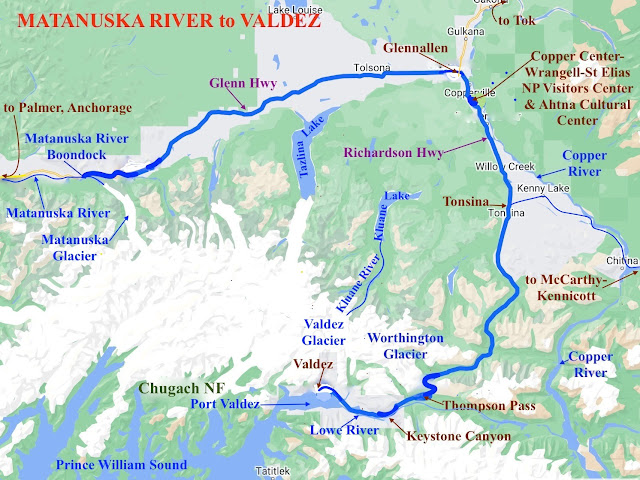
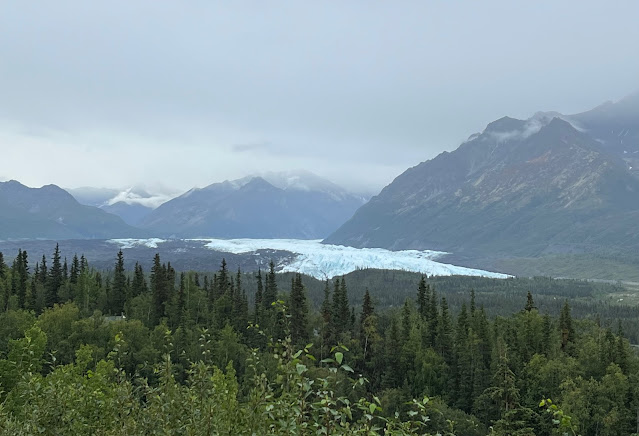







.jpeg)






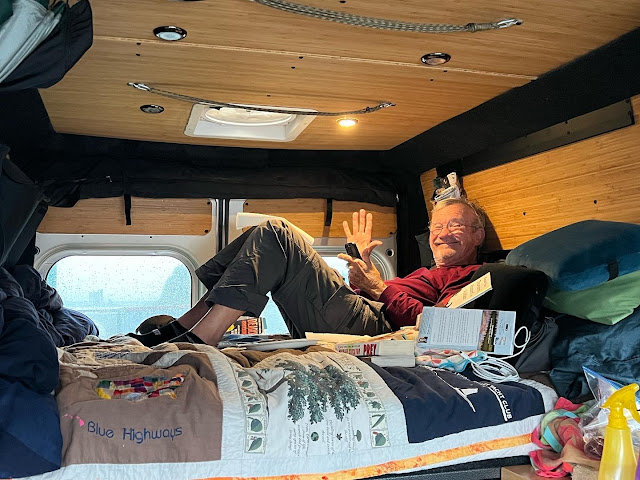

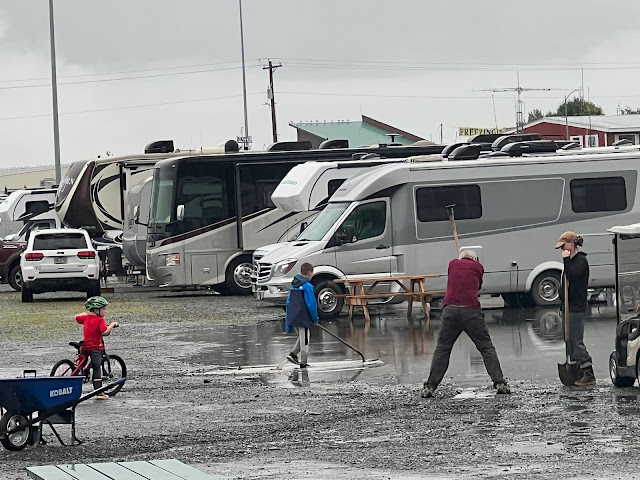

.jpeg)





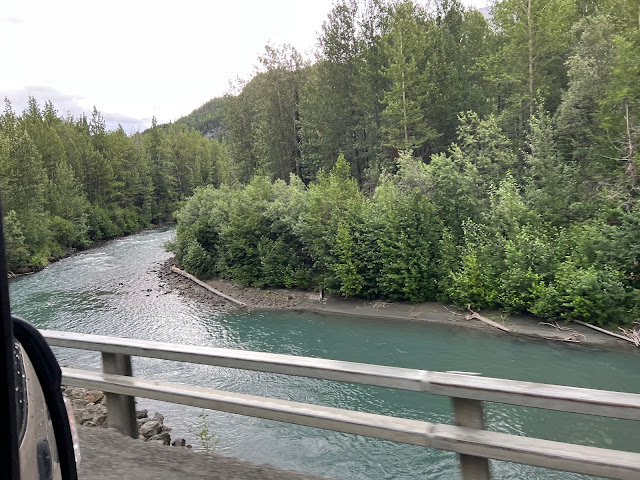


.jpeg)
.jpeg)








.jpeg)

.jpeg)















.jpeg)
.jpeg)

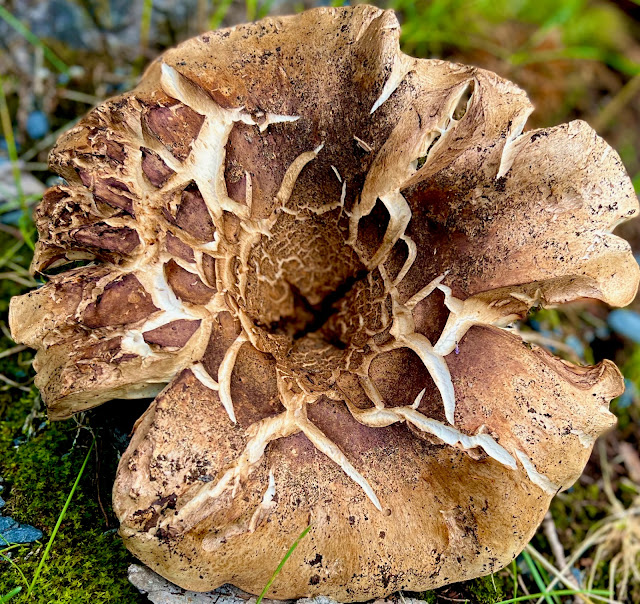
.jpeg)

.jpeg)





Great story.So muchistory h
ReplyDeleteThank you! Very pleased that you liked it. Thank you for taking the time to comment.
DeleteYou guys have too much fun, fun stories about beautiful country with photos to match. Some history this time. And Doug even got in a little work!
ReplyDeleteThanks so much, Scott. Too much fun?! ? Is that possible?😎
DeleteLoved this post, as I really loved Valdez. One story: that Ernesto fellow at the grill used to live in Santa Barbara! I don't recall at which restaurant he worked here, but that sure is a small world story.
ReplyDeleteThank you so much, Sally. Small world indeed! No wonder Ernesto’s food was so good.
Delete